CRJ 11:2 Out soon
The next issue of the Crisis Response Journal is out now: Here's a look at what's coming up; click here for article summaries (or full articles for subscribers)
Comment: Europe takes a functioning critical infrastructure system for granted, but our sophisticated systems make us vulnerable. We hope that total infrastructure breakdown will not happen, but we must be prepared, warns Prince Michael of Liechtenstein
Incident analysis
Disasters at the Hajj: More than 1,000 people were killed in two unrelated incidents at this year’s Hajj, reports Tony Moore, who looks into what happened and how, drawing upon his extensive experience of policing at large-scale events
Rally bombings in Ankara: Tony Moore describes how suicide bombers killed 102 people at a peace rally in Turkey
Paris attacks – A chronology: Christophe Libeau outlines the events in Paris on November 13, 2015
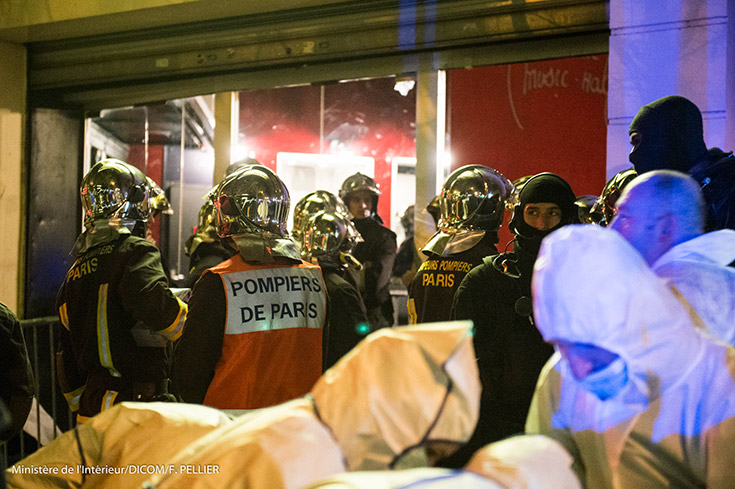
CRJ features a six-page round-up of the recent terrorist attacks in Paris, France (photo: MI/DICOM/F Pellier)
Paris attacks: Resource management – Christophe Libeau describes how the Paris Fire Brigade manages its manpower and resources during times of extreme emergency
Paris attacks: On the frontline – Incident Commander Michel Rimélé gives a personal account of response operations
Features
Today’s CBRN landscape: The current CBRN threat – or at least the perception of it – is increasing globally with the use of materials in Syria and Iraq by the Assad Regime and ISIS, and is likely to be replicated outside of these countries. But the international community can prepare itself and be resilient, says Hamish de Bretton-Gordon in an article based on his presentation at the London First Global Resilience Summit in October 2015
Command decision dilemmas: Dr Dave Sloggett looks at the issues that arise in command decision-making when responding to dynamic events, such as terrorist attacks
A continued and evolving threat: The nature of the terrorist threat is evolving – organizational response and planning must adapt accordingly, according to Roger Gomm
Senior management engagement: The reluctance of senior business leaders to engage in crisis preparedness must be addressed, says Dominic Cockram, as this could affect the ability of businesses to be truly effective in a crisis: their reputations are on the line
Manchester: United – County Fire Officer Peter O’Reilly describes how Greater Manchester Fire and Rescue Service is striving to position the fire service as a health asset through partnerships and collaborative working
Social safety not social unrest: Targeted rescue service engagement with local communities after civil unrest and riots in 2008 has paid off, with reduced violence against rescue workers, write Ulf Nilsson and Attila Jensen of Räddningstjänsten Syd in Sweden
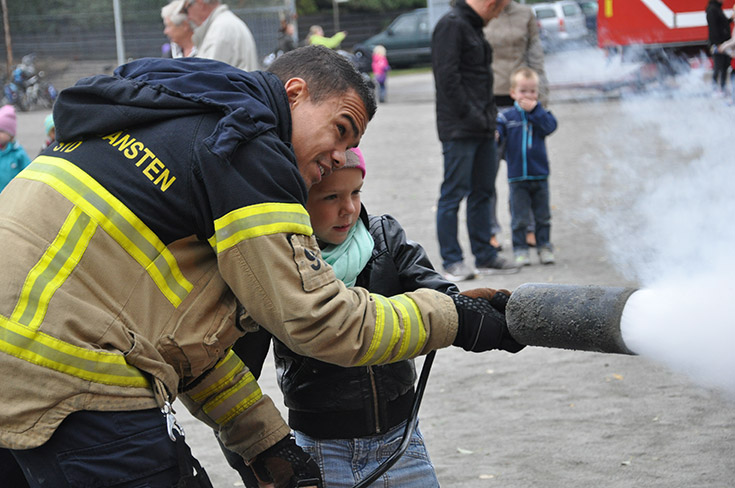
Rescue service social engagement in Sweden (photo: Räddningstjänsten Syd)
Balancing civil security and defence: Todd M Rosenblum, former Assistant Secretary of Defense for Homeland Defense and Americas' Security Affairs shares an insight into treading a tightrope between policy, perception, reality and saving lives
Civil-military: Working together – Rebecca Sutton presents some perceptions of civil-military relations and humanitarian assistance in West Africa, drawn from her questioning of participants at an innovative course held at the Kofi Annan International Peacekeeping Training Centre
Developing resilience: Are we putting enough into preparedness and capacity building before a disaster? John Holland investigates
Disaster diplomacy: We should learn to utilise disaster diplomacy better, because it is a great tool for more effective disaster risk management, contends Dr Albrecht Beck, describing the Joint Jordan Israel Palestine Preparedness Project
Getting to the scene safely: Anthony Hildebrand outlines the benefits of Emergency Vehicle Preemption systems
Global road safety crisis: Road risk is a global problem of ‘epidemic’ scale, according to the World Health Organisation. Currently the ninth leading cause of death worldwide, road crashes kill more people than malaria and have nearly reached the global fatality levels of tuberculosis, says Emma MacLennan
Will Smart Cities dream of resilience? According to David Prior, the biggest vulnerability of the move towards Smart Cities is simply that it is being addressed as a series of silos without reference to the other systems that each silo interacts with and is influenced by, according to David Prior
Networking for protection: Simona Cavallini, Julia Friedl and Margherita Volpe present a sustainable networking meeting point for Critical Infrastructure Protection
Keeping the power on: Tony Kingham argues that societies should be investing in permanent, multifaceted solutions to protect critical infrastructure
Water Feature
Water for peace and resilience: How can states effectively co-operate in making sure that risks are not exacerbated by growing interdependence and the interconnectedness between climate change, natural hazards and water Crises? OSCE Secretary General Lamberto Zannier describes water diplomacy in action
Adapting the UNDAC system: Professor Mo Hamza and Francesco Frezzetti review the challenges of adapting the UNDAC system – originally developed for earthquake response – to large-scale flooding response
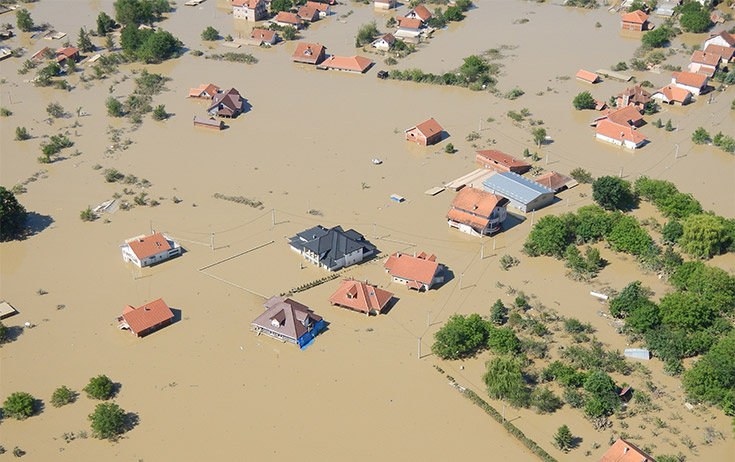
Despite having been shaped for earthquake response, in its 22-year history, large flood events have been the most frequent disaster for which the UNDAC system has been deployed (photo: UNDAC Serbia)
Floods in Sierra Leone: Robert McAlister reports how this country, already beleaguered by the Ebola epidemic, faced unprecedented damage after torrential rains
French Riviera Floods: Violent storms caused floodwaters to surge through towns in France, killing 20 people, report Carlo Zaglia and Christophe Libeau
Reducing motorist deaths: Andrew Gissing examines initiatives to change drivers’ behaviour during floods in Australia, saying that motorists entering floodwaters are a major cause of flood fatalities
California drought update: Bill Peterson describes the current status of the continuing water crisis in the state of California
From policy to emergency response: Even with what is being quoted as a potential ‘Godzilla’ of an El Niño season, the winter is likely only to take the edge of the significant drought that California is experiencing: Water utilities and emergency managers are facing a tough and complex challenge, say Kelly Hubbard and Dr Melissa Baum-Haley
Reducing coastal risk: Mathijs van Ledden presents key lessons in lessening the risk of coastal flood disasters, namely that investment in flood prevention pays off, and win-win opportunities are the most successful
Technology
Research & Development: Dr Ian Portelli and Megan Mantaro introduce a new regular section, prompted by the popularity of CRJ’s online R&D blogs
Drones in the emergency services: UAVS are one of the most talked about technologies of the last 12 months, inspiring ideas and creating concern in almost equal measure. Andrew Griffith presents some practical considerations for emergency services considering investment in this technology
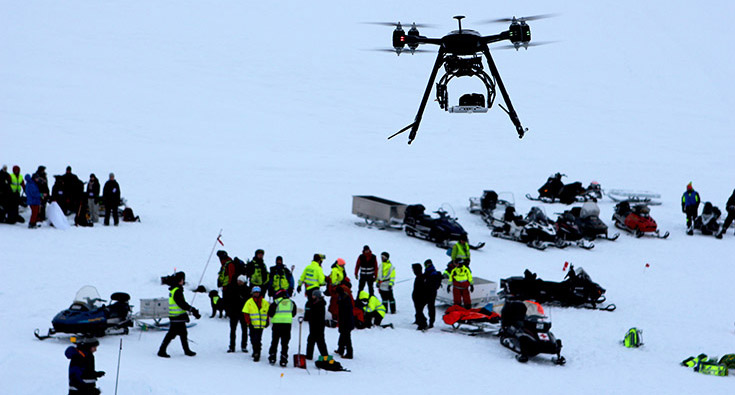
Andrew Griffiths examines the pros and cons of drones within the emergency services (photo: Aerialtronics)
Ham radio in Belgium: Belgian amateur radio enthusiasts are connecting the whole of society, providing invaluable backup should major, wide-scale power cuts affect emergency service communications. Emily Hough finds out more
Monitoring critical buildings to enhance response, reconstruction and recovery after a disaster: Evangelos Sdongos and Dr Angelos Amditis describe a monitoring system for buildings to provide near real-time assessment of structural condition and damage after a disaster, with enough detail to be useful in response, reconstruction and early recovery
In Depth
Advanced situational awareness: Thomas Wilflinger concludes this series by describing commercially-available software packages and how they can be harnessed by first responders to provide situational awareness during a radiological terrorist attack or other incident
Legal liability in nuclear accidents : In the second part of this series exploring the historical layers of legislation regarding the international nuclear industry, Alina Alexe of Romania’s Foreign Affairs Department examines how the Paris Convention should be updated to reflect the evolving complexity of today’s global risk landscape
Effective decision-making records: Roger Gomm continues his series on the importance of maintaining clear records during an incident
Regulars
Looking back: It is 30 years since the Space Shuttle Challenger disintegrated over the Atlantic Ocean just a minute after its launch. Tony Moore describes what happened.
Europe: CRJ looks at the Disaster Risk Management Knowledge Centre, recently launched by the European Union, which is designed to strengthen knowledge management across the entire disaster management risk cycle and at all levels of capacity
Frontline: Congo has suffered a brutal war – over five million people have been killed and still the fighting continues. An estimated 7,000 children are being used in active warfare, prized by the rebel militias because of their ‘purity’ – a status said to give them special powers to prepare black magic potions and amulets to protect the rebels against bullets. Emily Hough speaks to Henri Ladyi who demobilises rebel militias, especially child soldiers, with the assistance of international aid from Peace Direct
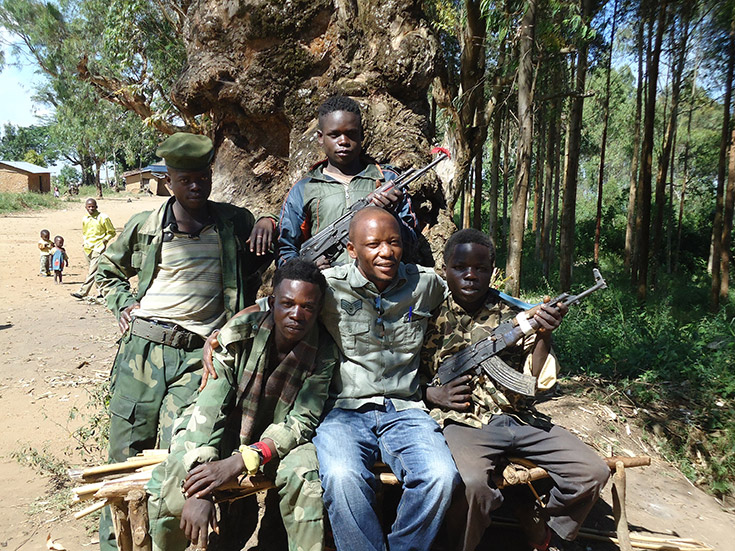
Henri Ladyi works to demobilise children from militias in DR Congo
Tony Moore, 14/12/2015